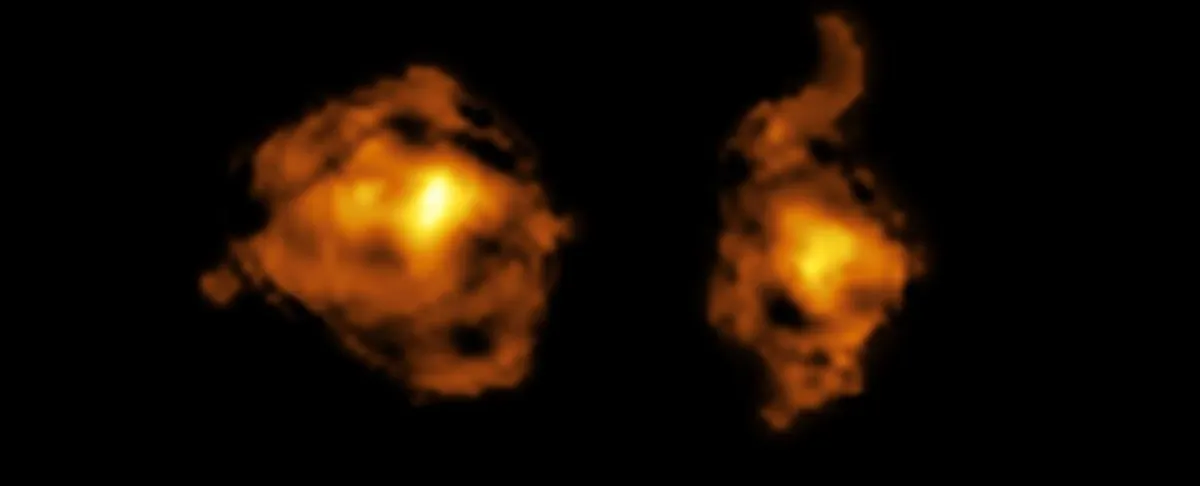
The moment one galaxy spears another with a powerful beam of radiation from its central black hole has been captured in an extraordinary observation of a distant galactic collision. This marks the first time that astronomers have witnessed such an interaction during an ongoing galactic merger. The impact on the 'wounded' galaxy is significant, as the beam of radiation severely suppresses star formation by clearing the clouds from which new stars are born. Researchers involved in this groundbreaking discovery have dubbed the phenomenon the 'cosmic joust'. According to astronomer Sergei Balashev from the Ioffe Institute in Russia, who co-led the research with Pasquier Noterdaeme from the Institut d'Astrophysique de Paris, this observation provides a unique insight into how a quasar's radiation affects the internal structure of gas within a seemingly normal galaxy.
Across the vast expanse of the Universe, nearly as far back as our telescopes can observe, astronomers have discovered and analyzed various galactic collisions. The Universe is intricately connected by a vast, invisible web of dark matter, which gravitationally channels galaxies into clusters. In these clusters, galaxies frequently collide and merge, leading to the formation of larger galaxies. This activity is believed to play a crucial role in the growth and evolution of galaxies and the supermassive black holes located at their centers. The process unfolds over millions of years as galaxies drift close enough to be influenced by each other's gravity, engaging in repeated close encounters and gradually spiraling inward until they ultimately merge into a single entity.
The current stage of the cosmic joust features a notable distinction: one of the galaxies involved is a quasar. This phenomenon occurs when the supermassive black hole at a galaxy's center consumes material at an extraordinary rate from a vast surrounding cloud. The gravitational and frictional forces within this cloud heat it to millions of degrees, causing it to emit intense light. Additionally, some of the material spiraling towards the black hole is redirected along the magnetic field lines that extend from the event horizon, resulting in powerful jets that are expelled into space at nearly the speed of light.
In the cosmic joust scenario, when the quasar galaxy races past its counterpart at speeds nearing 500 kilometers (310 miles) per second, its jets penetrate the other galaxy, disrupting its star-forming clouds of dust and gas. This disruption leaves minimal material behind, significantly hampering the activity of star formation within the affected galaxy. Furthermore, some of the gas from the wounded galaxy is gravitationally siphoned off by the quasar galaxy, which then feeds this gas to the hungry black hole at its core.
The activity of the quasar is not beneficial for star formation in its own galaxy either. As the black hole aggressively consumes material, it generates powerful jets known as black hole winds that disperse in all directions. These high-speed outflows can push away and deplete the host galaxy's own star-forming materials, a process referred to as quenching. While both galaxies experience turmoil during this interaction, their ongoing relationship may also present opportunities for new life.
When galaxies collide, their gas reservoirs come together, and the resulting shocks create regions of high density. This gravitational collapse can initiate the formation of new stars. Thus, even amid chaos, there lies the potential for new beginnings. Sometimes, it takes a significant disruption to spark a new phase of life, even for galaxies in the early stages of the Universe.